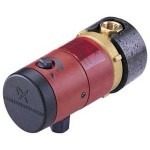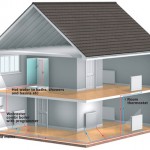Wood Gasification Boiler: Wood Gasification & Complete Combustion

Since a long period of time home heating systems have undergone a long way of renovation with its latest advancements to satisfy various needs and wishes of today’s customer who seeks for efficiency. Nowadays, the market presents us different types of home heating systems to choose from, like: forced air heating and cooling system, radiant heating system, hydronic (hot water baseboard) system, steam radiant heating system, boilers, geothermal heating system, etc. Which one to choose is up to the customer, but, when it comes to covering a large house situated in the area with a constant access to firewood with heat, then wood gasification boiler, as one of the most upcoming and popular heating trends, will be a perfectly right choice. So, what is the main purpose of a wood boiler, what are its main features and advantages over other heating systems, and what kind of process is called ‘wood gasification’?
Wood Gasification Boiler: What Is It?
The term ‘boiler’ is typically referred to as a device used to convert water to steam for the purpose of power generation or heating. What concerns home heating industry, the term ‘boiler’ is typically referred to as a device used to produce only hot water, but not steam. So, in fact, a wood boiler is a device whose purpose is to burn wood in order to produce hot water for home heating. Sometimes, the term ‘wood boiler’ is referred to a ‘wood-fired hydronic furnace’ (a device to burn wood in order to heat air for use in forced-air heating system) or ‘wood-fired hydronic heater’ (a device to burn wood in order to heat water for use in hydronic radiant or forced-air heating systems).
The term ‘wood gasification’ means the process according to which organic or carbon-based materials (e.g., coal, wood (biomass), petroleum) are converted into combustible gases by reacting the raw material at high temperatures with a limited amount of oxygen. Now, we can define a ‘wood gasification boiler’, which is a central heating device that uses limited amounts of oxygen and high temperatures in order to convert wood into thermal energy used for purposes of heating and transported in such heat transfer fluid as water or others.
Wood Gasification vs. Complete Combustion
The result of the wood gasification process is woodgas, which in gasification wood boilers don’t just go up and out the chimney (peculiar for standard wood boilers), but is rather emitted, superheated and mixed with air, with further resulting in complete combustion (leaves little or no ash). Mixed heat is then transferred to a boiler, where it is efficiently distributed.
Generally, there are two common approaches of applying the principles of wood gasification and complete combustion in the small-scale or residential wood boiler design:
- continuous burn (dual combustion chambers; one continuous burn of a woodload with further resulting heat transfer to a water storage tank (400 gallons or more), where it is stored until needed);
- on-demand burn (single combustion chamber; a single burn chamber fosters wood gasification process with further thermal mass maintaining the firebox at extreme temperatures, necessary for complete combustion, thus enabling the system to be operated on demand and removing the need for the water storage tank. Simplifies the unit operation and maintenance procedures, enables greater fuel composition variability).
So, if you are about to purchase a wood boiler, remember wood gasification boiler is better than traditional one (e.g., water-jacketed wood boiler). It’s not only characterized with higher effectiveness, easier servicing and cleaning, higher build quality and efficiency ratings (depends on the dryness and quality of the wood you put in a boiler), but wood gasification means less ash, lower emissions and less wood required.
- popular
- new






